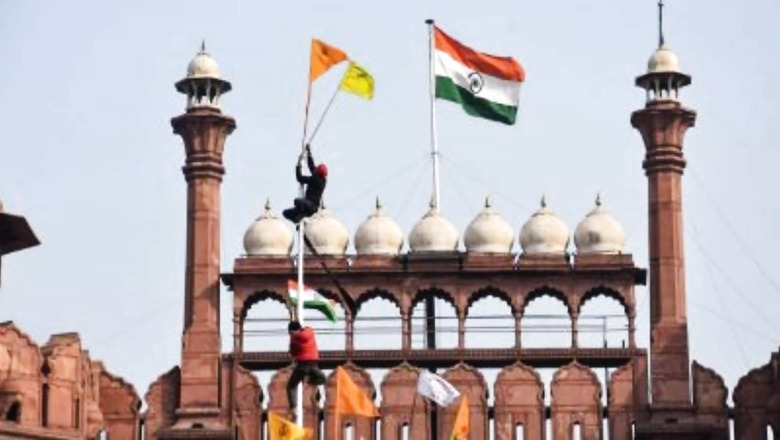
views
On June 23, 1985, Air India Flight 182 travelling from Montreal to London en route to Delhi blew up over the North Atlantic. The explosion claimed the lives of all 329 people on board, which included 268 Canadians, 27 British and 24 Indian citizens. It remains to date the single most deadly terrorist attack in Canadian history.
Last week, the Indian Ministry of External Affairs, citing a detailed report prepared by the Washington DC-based Hudson Institute, spoke about the need for the US authorities to take seriously the increased activities by Khalistani groups on US soil. This comes ahead of Prime Minister Narendra Modi’s expected visit to the United States, which Khalistani organizations are reportedly planning to disrupt. So far, it is not clear what the US will do to address these concerns. However, it does seem that the West has learned no lessons, from the Kanishka bombing to the attacks of 9/11—that terrorists anywhere are a threat to people everywhere.
For America, the 20 year-long war in Afghanistan has ended in defeat. As a final tragedy, 13 US service members lost their lives in a terrorist attack at Kabul airport during the final stages of the withdrawal. A US drone strike to try and avenge the attack failed badly, killing 10 civilians, including seven children. In other words, if the US believed that they could maintain a military presence with their ‘over the horizon’ capabilities, they can no longer do so. With the Taliban taking over, Pakistan’s western flank is now secure, with apparent Chinese help. We can now expect Pakistan to put all their efforts into Kashmir, and towards reviving militancy in Punjab. Again, the Chinese won’t mind one bit.
In India, the Khalistan sentiment is mostly dead. This often leads to a false sense of security among the Indian public. While we see jihadis in Kashmir as an existential threat, there is a tendency to gloss over the dangers of Khalistani organizations. This is a misunderstanding of their potential for subversion, as well as the new methods of information warfare being adopted by secessionist groups.
Understanding the New Warfare
The support base for Khalistan has now shifted. It now consists of members of the diaspora who migrated from India decades ago. They have established roots in their adopted countries in the West such as in Canada, the UK, and the US. Their children and their grandchildren have never belonged to any other country. This makes them more likely to believe the worst about India, especially now that the international media appears to have made a habit of defaming our country. An entire ecosystem of NGOs, media organizations, academics and activists thrives on bashing the Indian state.
This is the new warfare. These secessionist groups have learned to speak the language of human rights, self determination, social justice and anything else that makes people feel warm and fuzzy inside. They have learned how to play the game both online and on mainstream media. Much like the Taliban, actually. The last time, the Taliban made a gruesome spectacle of their primitive methods. And thus, they came to be at the receiving end of a public relations disaster. This time, they know better. As some elements in our own subversive activist class would say, the Taliban have changed their strategy, not their ideology.
And it seems to be working for the Khalistani groups, just as it is for the Taliban. For several years now, the Khalistani groups have been agitating for something called “Referendum 2020”. This appears to be some kind of mobilization among the diaspora to “vote” on the secession of Punjab from India! The move has been delayed by the pandemic and is now rescheduled for some point in 2021. Not surprisingly, the details of this plan are sketchy. But it has enough traction to gather the support of individuals such as Jagmeet Singh, the leader of Canada’s New Democratic Party. In this Canadian election, Jagmeet Singh’s party is expected to pull in as much as 20 per cent of the vote, or the support of one in five Canadians! In a fractured parliamentary system, Jagmeet Singh could well be Canada’s next Prime Minister.
The results of such subversion are obvious. For one, these people are able to raise money in the West and spend it in India. Seen as successful by virtue of being settled abroad, these individuals also have considerable social capital in villages and towns of Punjab. Most importantly, they are able to pick up discontent on purely domestic issues and fluff it up with rhetoric of human rights and civil liberties. Then, they give it the appearance of a crisis that needs the attention of the world. This is how India’s farm laws became a subject of debate in the British Parliament. That should never have happened.
No, the use of water cannons is not a human rights violation. In fact, water cannons are used routinely by law enforcement all over the world to subdue protesters; in France, Germany, Switzerland, the UK, the Netherlands, Italy and Belgium. In other words, pick almost any country that some folks on Singhu border might want to migrate to. You can be sure that they use water cannons.
But that is not how it went down in the eyes of the world. In a rather extraordinary intervention in the domestic matters of a foreign country, the Prime Minister of Canada spoke out about those protesting agricultural laws in India. In other words, the Canadian Prime Minister understands his constituency at home, the power of their money and their votes. So should India.
Collaborating with Activity Lobby
In fact, the agitation against these farm laws is particularly curious as a case in point. Because it illustrates how secessionist groups have perfected the art of blending in with the others, and putting the Indian state on a difficult tightrope walk. You couldn’t possibly believe that the vast majority of those protesting these laws, or even a significant minority of them, were Khalistan sympathizers. No, these people were our own. Many of them had either served in the Indian Army or have sons serving in the military right now. But then, what do you make of those who stormed the Red Fort on Republic Day?
The Red Fort, or Lal Qila, serves as a metaphor for the Indian nation, its power, its authority and its sovereignty. Every Indian instinctively understands what it means to take over the Red Fort in Delhi. In places as far away as Bengal, the heroic posture of Netaji Subhas Chandra Bose is always shown with the slogan “Delhi Chalo”, along with an image of the Red Fort. What happened on Republic Day this year was a symbolic overthrow of the Indian state, and unforgivable.
Again, this is the new warfare, and it is all about communication. The secessionist groups might not have won any converts during the anti-farm law agitation. But they are fine with that, because winning converts was not their immediate aim. They wanted to open a channel of communication with common people in the state, in which they have been quite successful. They will now work on this opening, pushing their agenda little by little. The Indian state is in a difficult spot. Any kind of action by law enforcement can be twisted and labelled as persecution of people of a certain religion. And they have an entire supply chain of activists, NGOs and international media organizations who will exaggerate by throwing labels such as “genocide” or “fascism”.
It has been a year since these laws were passed. Farmers from no other state have joined the supposed agitation, at least not in significant numbers. And so, at a bare minimum, they get to hold these laws—and the entire agricultural economy of India—hostage. In a best case scenario, they may manage to start a secessionist movement within India. This is how subversion works.
As part of their general savvy, these groups have also shown the ability to collaborate with any other activist lobby. These could be Communists, feminist groups, missionary organizations, environmentalist groups, anyone. There may not be any actual common ground between them, but that does not matter. Because subversion is all about sowing discontent in patches, here and there, bleeding the Indian state by a thousand cuts. As was likely the case with one individual in Bengaluru, some of the foot soldiers may not even understand who they are collaborating with. But that’s okay, because the aim of subversive is to get everyone to do a little bit, without revealing the big picture to them.
West’s Self-destructive Behaviour
This may sound ironic today, but the most coherent description of such subversive methods appears in a 2013 affidavit filed by the UPA government before the Supreme Court:
“These ‘mass organisations’ are generally manned by ideologues, who include academicians and activists, fully committed to the party line. Such organisations ostensibly pursue human rights related issues and are also adept at using the legal processes … The ideologues and supporters … in cities and towns have undertaken a concerted and systematic propaganda against the state to project the state in a poor light and also malign it through disinformation … However, initiating legal proceedings against them has often resulted in negative publicity for the enforcement agencies due to the effectiveness of the propaganda machinery.”
Thank you. I could never have said it better. Now if only certain parties today could see beyond their immediate political interests. And if they could just read what they wrote back when they had the responsibility of running this country, that would certainly help. Because the subversive, whether they be Khalistanis, Naxalites or Islamist terrorists, always play the long game. To survive, we need to stay one step ahead of them. Internal differences aside, we have to recognize our common enemies.
Of course, Pakistan is very happy to help with any kind of subversion against India. They already had an existing clutch of “Kashmiri” civil society groups at their disposal. Now, in numbers greater than ever before, they have started plugging Khalistani groups into their protests, demonstrations and lobbying to undermine India everywhere.
This lobbying does have an impact. For instance, in December 2020, some “researchers” at a cunningly named NGO called “EU Disinformation Lab” claimed to have unearthed a 15 year-long conspiracy by India to malign Pakistan as a sponsor of terrorism! Of course, the accusation is self-evidently ridiculous. And yet, some people in responsible positions in the West did fall for it, saying it could come up during the EU-India strategic partnership dialogue. This can only be described as self-destructive behaviour by the West.
As India raises the issue of Khalistani groups operating in the US and Canada, we can only hope that these countries stop making mistakes that will harm us and also harm them. Because, as America’s experience with Pakistan has always shown, they are better off treating India’s concerns as universal.
Abhishek Banerjee is a mathematician, columnist and author. The views expressed in this article are those of the author and do not represent the stand of this publication.
Read all the Latest News , Breaking News and Ukraine-Russia War Live Updates here.













Comments
0 comment